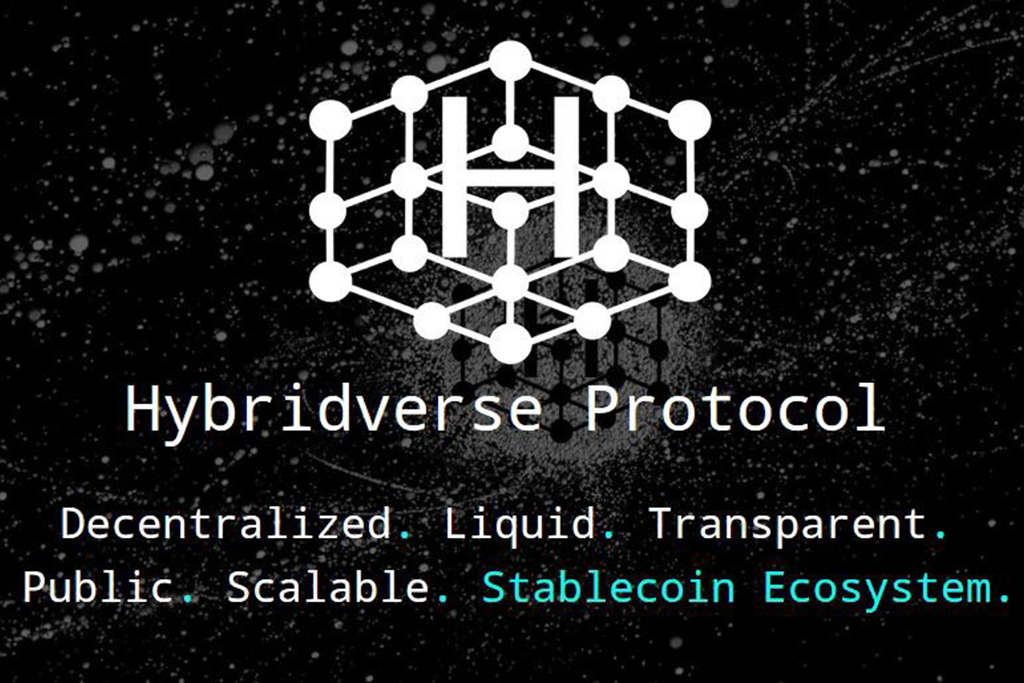31
Stable Coins Forum / Hybridverse Building Its Euro-Backed Stablecoin on Zilliqa Blockchain
« on: June 26, 2019, 01:24:46 PM »
Hybridverse’s Euro backed stablecoin is called Hybrid Euro (HEUR), and is being built on Zilliqa Blockchain that is first and only blockchain to implement sharding.
 Photo: Hybridverse Blockchain / Medium
Photo: Hybridverse Blockchain / Medium
Hybridverse, ‘the world’s first high throughput stable cryptocurrency ecosystem as a service,’ announced that they decided to build its Euro-backed Stablecoin on Zilliqa Blockchain.
Hybridverse presents itself as a multi-purpose payment network enabling users to operate within the blockchain economy in an easy way. They introduce themselves as a transparent, liquid, peer-to-peer, easily accessible, public, open system merging the benefits of cryptocurrencies and the simplicity of normal currencies.
Italian based company had already in November last year been selected to be part of I3P — Treatabit, the Incubator for Innovative Enterprises of Turin’s Polytechnic University. I3P is being ranked 1st in Italy, 5th in Europe, 15th worldwide by the UBI ranking, the Global Benchmark Report of best academic incubators.
Their Euro backed stablecoin is called Hybrid Euro (HEUR), and is being built on Zilliqa Blockchain.
They explain such a decision with Zilliqa being the first and only blockchain to implement sharding, that has been a task that many projects and enterprises in the blockchain industry tried to solve and to address.
They also said that, before choosing Zilliqa, they’ve evaluated different blockchain platforms based on decentralization, security, scalability, tax costs and innovation criteria. Zilliqa has 2,400 nodes that is 99 times more than EOS and two times more than TRON in just 1 week of mainnet activity. Thanks to its sharding technology the platform manages to process transactions in a scalable and decentralized way, allowing to provide high-throughput performance with no compromises on network security.
Also, instead of pushing the hype by releasing a mainnet with a small number of nodes, the Zilliqa Team choose to delay the mainnet in order to guarantee security.
Smart contracts on Zilliqa are programmed in a brand new language specifically created by the Zilliqa Team called Scilla. Before compiling the program into code for an actual, physical machine, the compiler first translates it into intermediate code suitable for a theoretical, abstract machine. Scilla is therefore bug resistant, because if the code is bugged, it can’t be compiled and the smart contract can’t be deployed on the blockchain.
There is also a question of cost efficiency. Transaction costs on Zilliqa are pretty low – 0.000023 $, which is 700 times less than ETH and BTC fees. This say Hybridverse, allows them to provide to its users not only the fastest stablecoin but also the one with the cheapest fees, allowing for nano payments.
Link

Hybridverse, ‘the world’s first high throughput stable cryptocurrency ecosystem as a service,’ announced that they decided to build its Euro-backed Stablecoin on Zilliqa Blockchain.
Hybridverse presents itself as a multi-purpose payment network enabling users to operate within the blockchain economy in an easy way. They introduce themselves as a transparent, liquid, peer-to-peer, easily accessible, public, open system merging the benefits of cryptocurrencies and the simplicity of normal currencies.
Italian based company had already in November last year been selected to be part of I3P — Treatabit, the Incubator for Innovative Enterprises of Turin’s Polytechnic University. I3P is being ranked 1st in Italy, 5th in Europe, 15th worldwide by the UBI ranking, the Global Benchmark Report of best academic incubators.
Their Euro backed stablecoin is called Hybrid Euro (HEUR), and is being built on Zilliqa Blockchain.
They explain such a decision with Zilliqa being the first and only blockchain to implement sharding, that has been a task that many projects and enterprises in the blockchain industry tried to solve and to address.
They also said that, before choosing Zilliqa, they’ve evaluated different blockchain platforms based on decentralization, security, scalability, tax costs and innovation criteria. Zilliqa has 2,400 nodes that is 99 times more than EOS and two times more than TRON in just 1 week of mainnet activity. Thanks to its sharding technology the platform manages to process transactions in a scalable and decentralized way, allowing to provide high-throughput performance with no compromises on network security.
Also, instead of pushing the hype by releasing a mainnet with a small number of nodes, the Zilliqa Team choose to delay the mainnet in order to guarantee security.
Smart contracts on Zilliqa are programmed in a brand new language specifically created by the Zilliqa Team called Scilla. Before compiling the program into code for an actual, physical machine, the compiler first translates it into intermediate code suitable for a theoretical, abstract machine. Scilla is therefore bug resistant, because if the code is bugged, it can’t be compiled and the smart contract can’t be deployed on the blockchain.
There is also a question of cost efficiency. Transaction costs on Zilliqa are pretty low – 0.000023 $, which is 700 times less than ETH and BTC fees. This say Hybridverse, allows them to provide to its users not only the fastest stablecoin but also the one with the cheapest fees, allowing for nano payments.
Link



 Latest news:
Latest news: 





 Shop
Shop
 Bidding Open
Bidding Open
